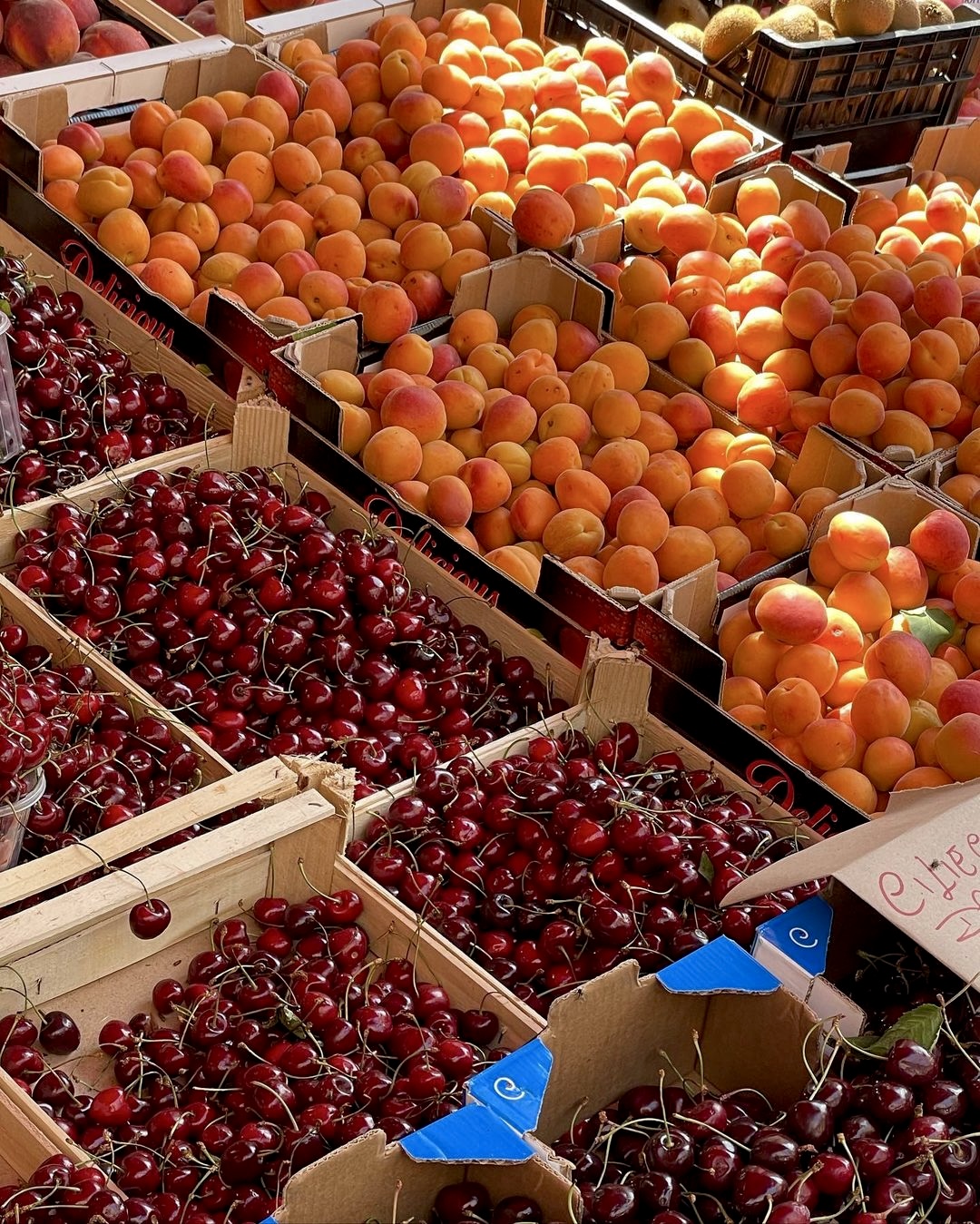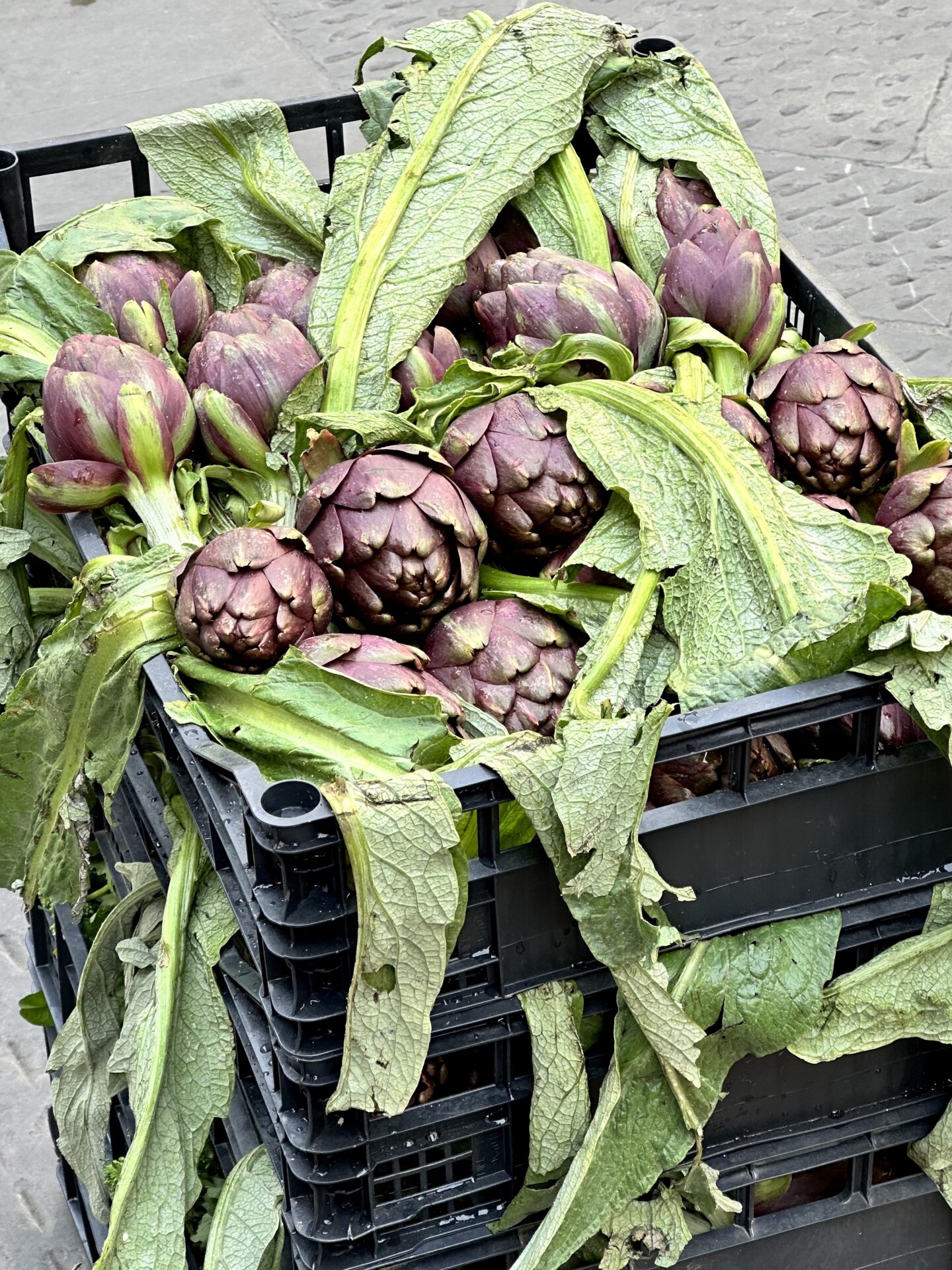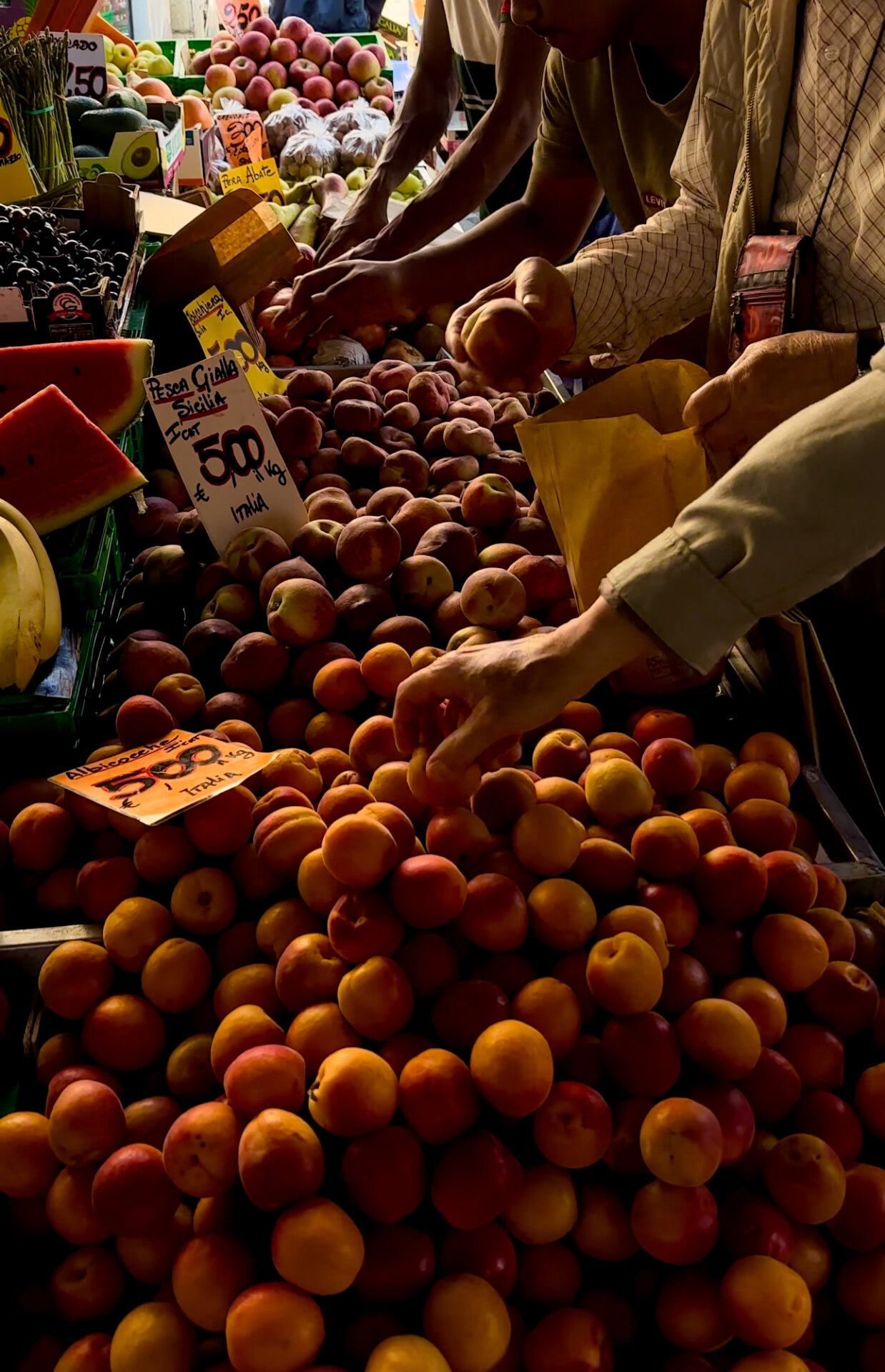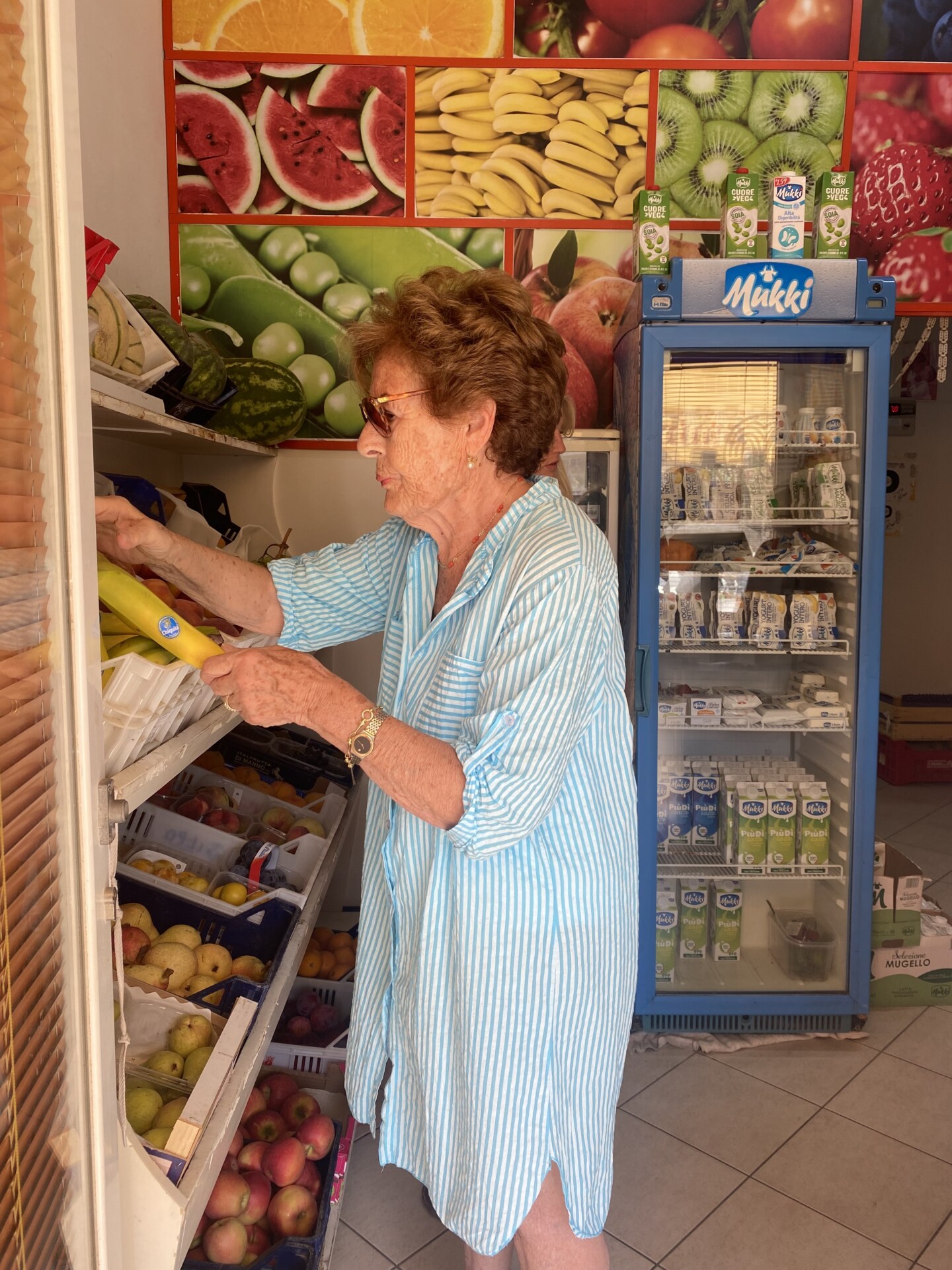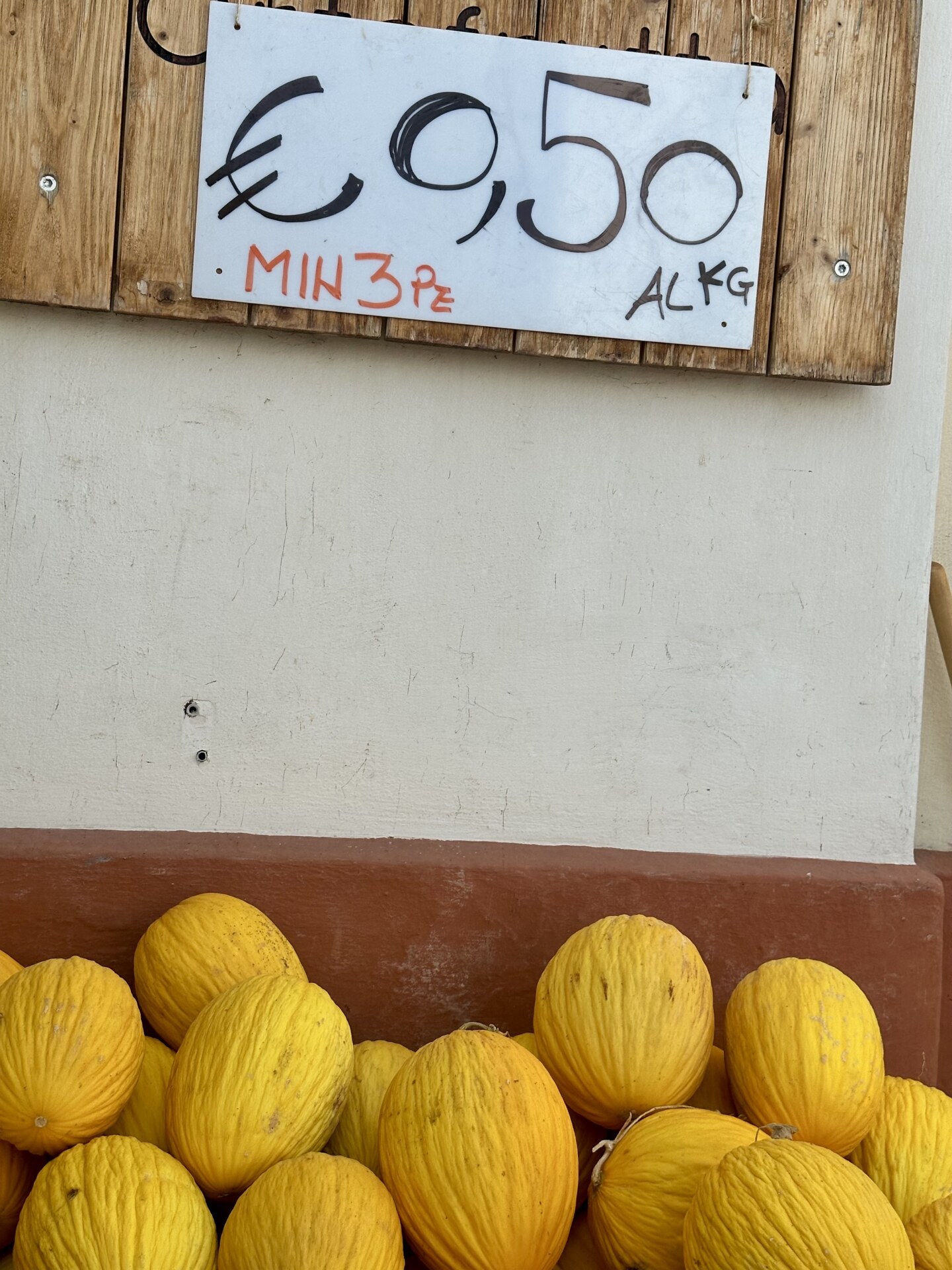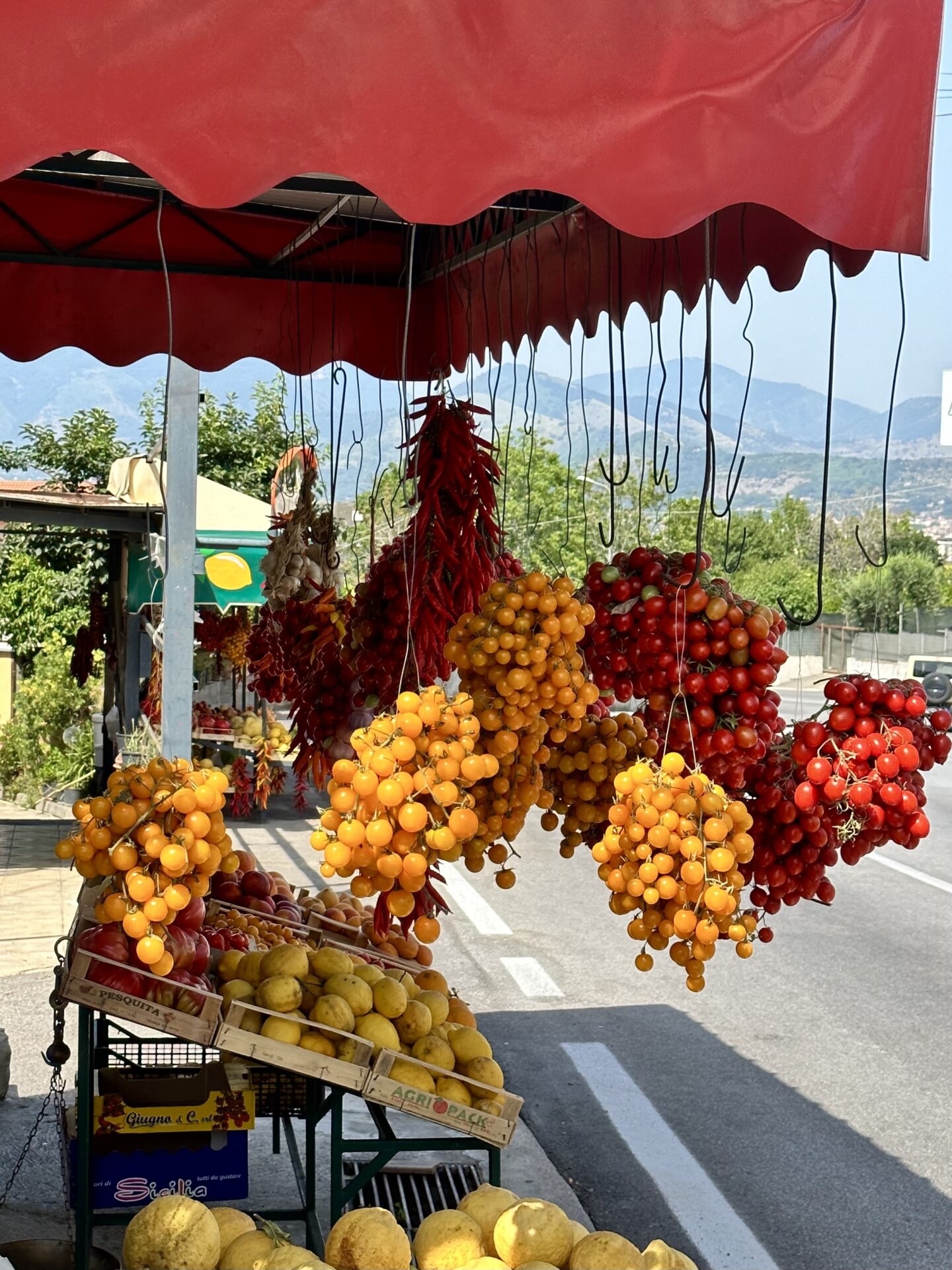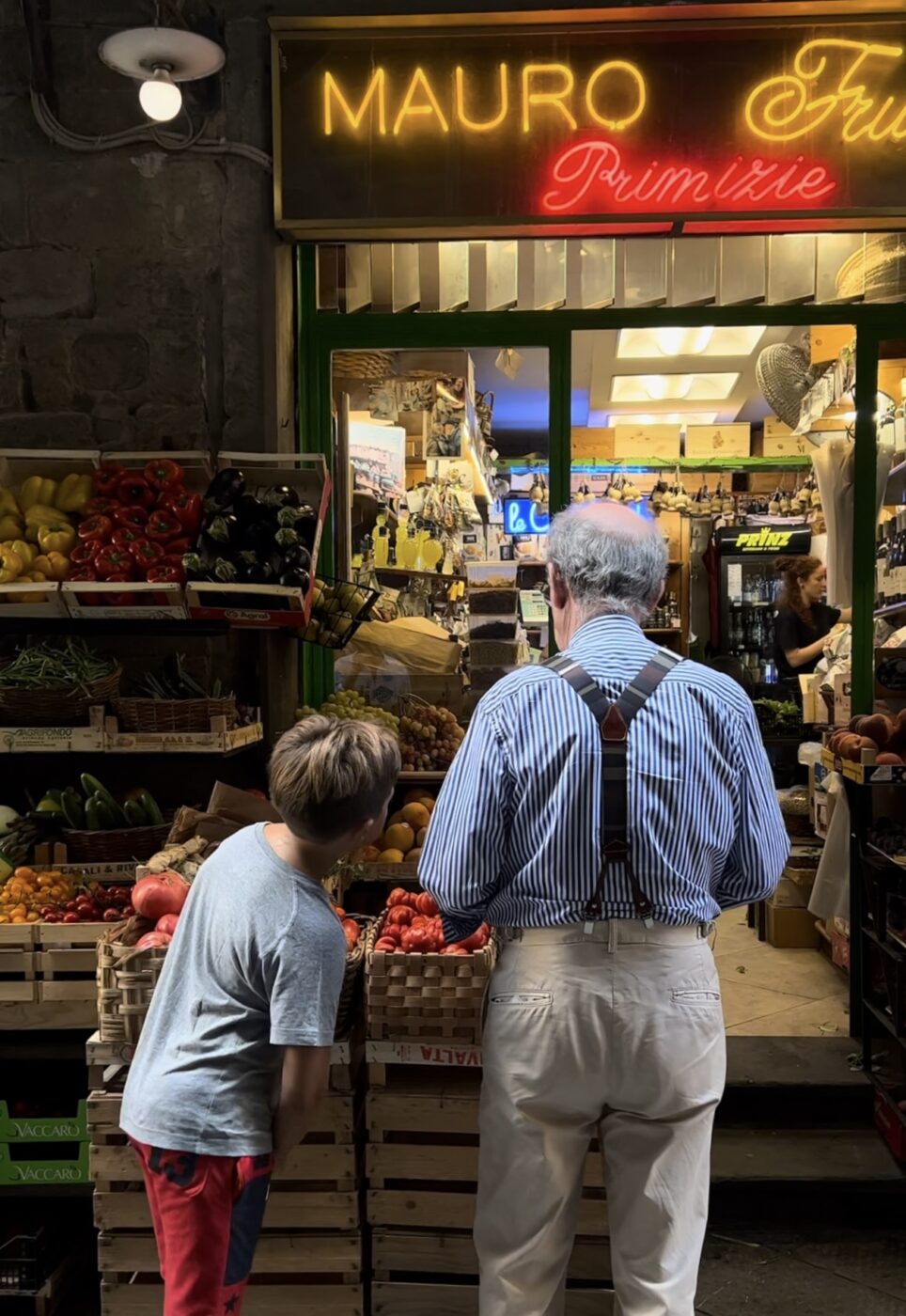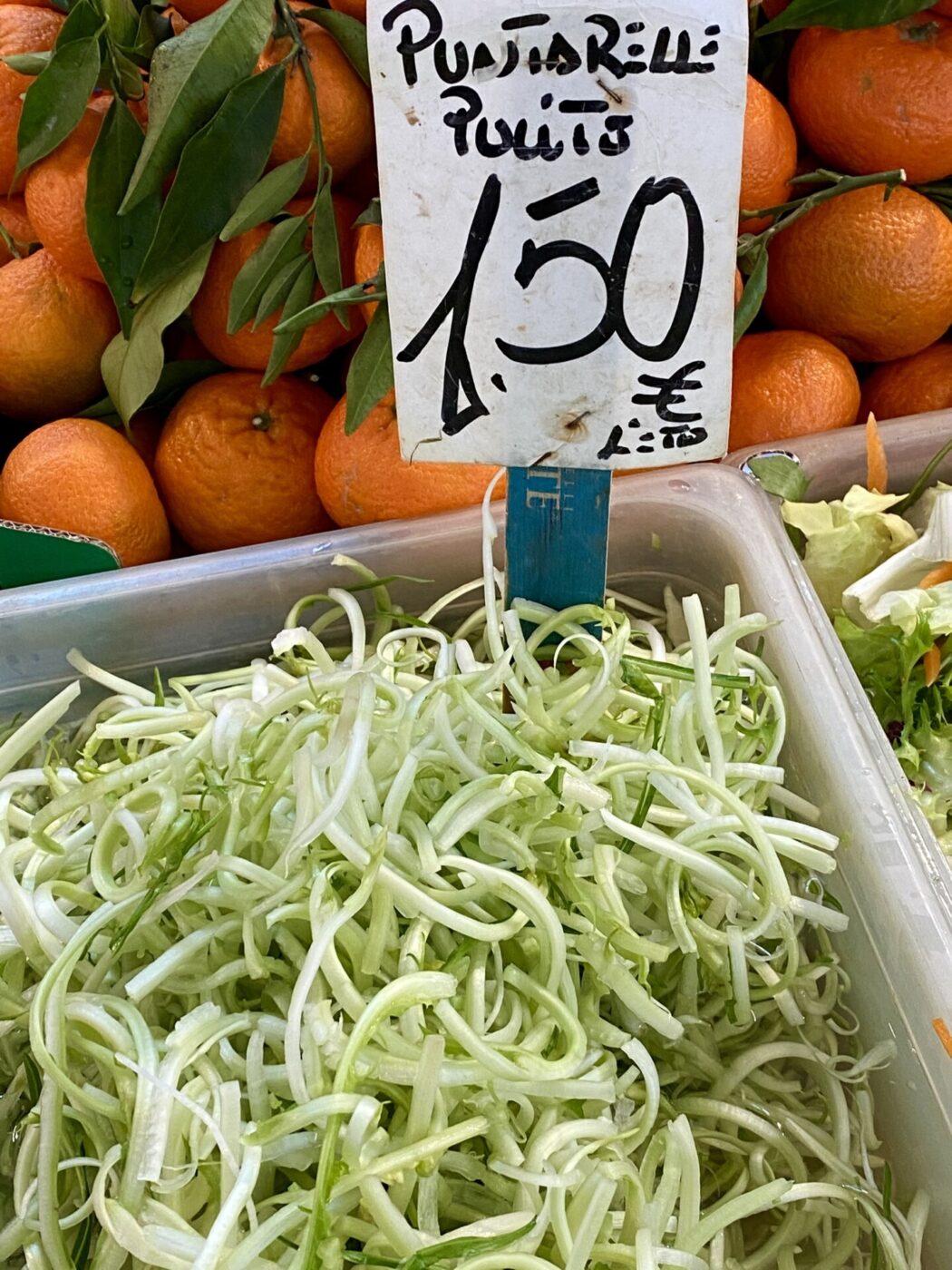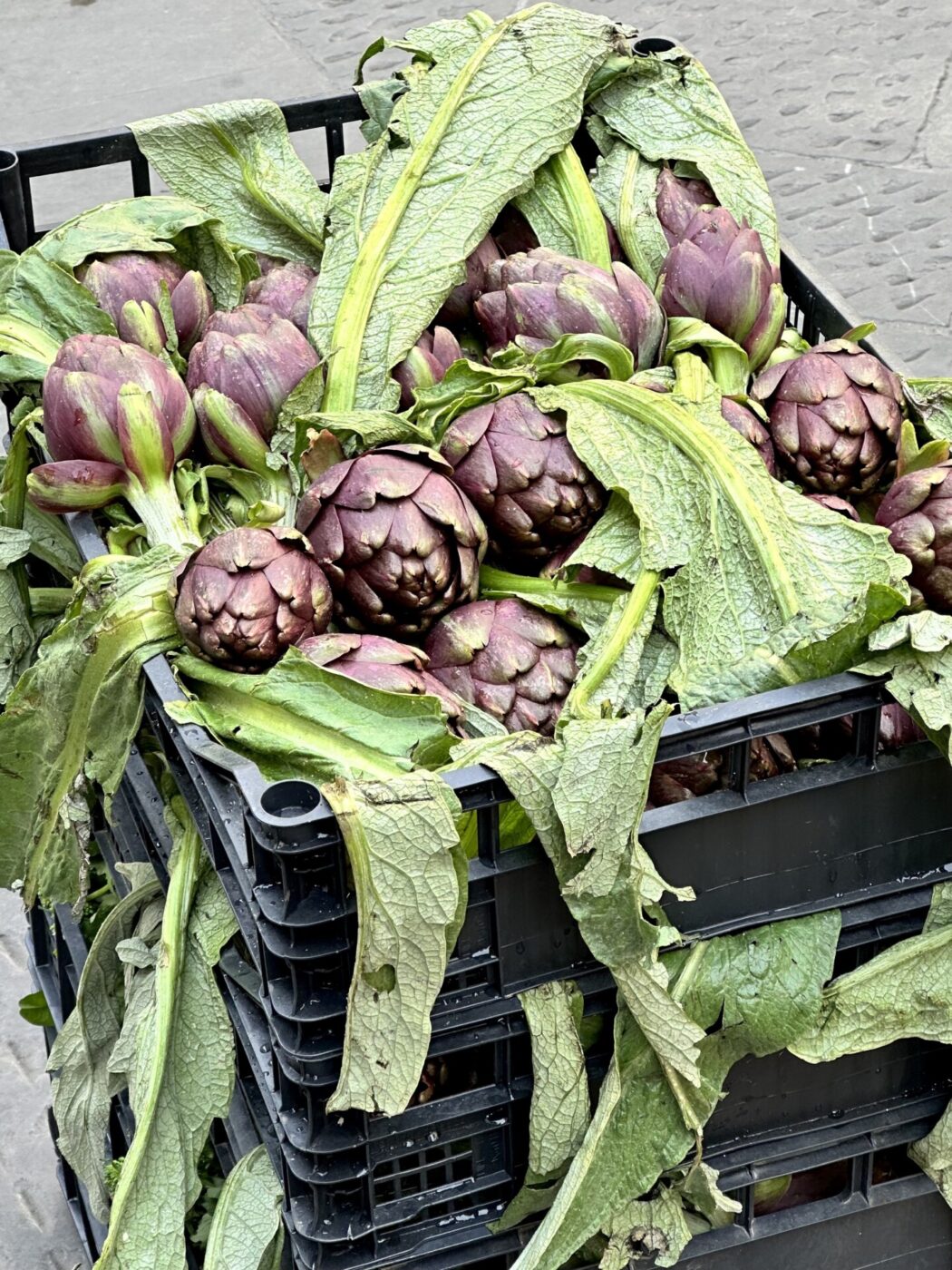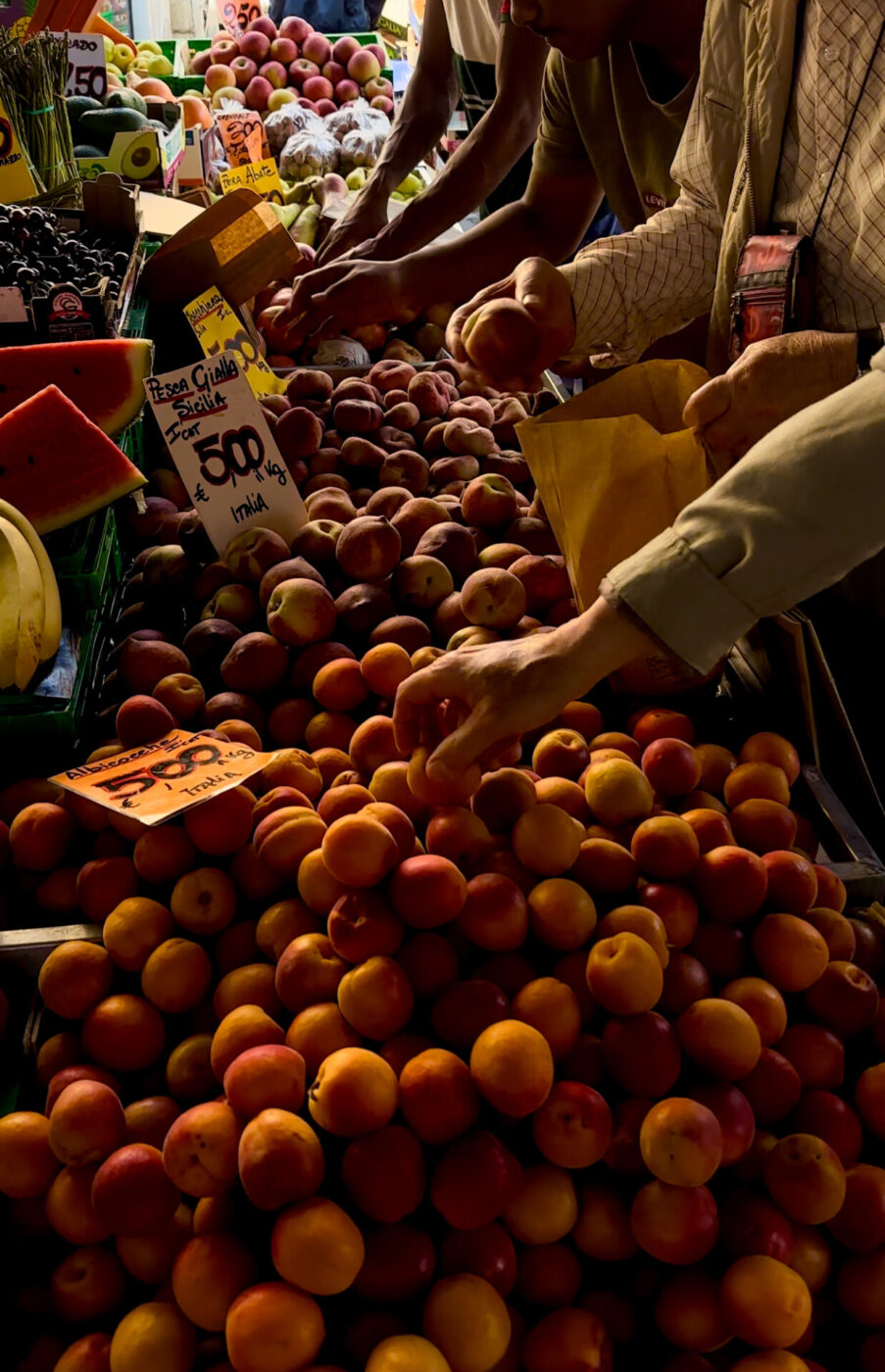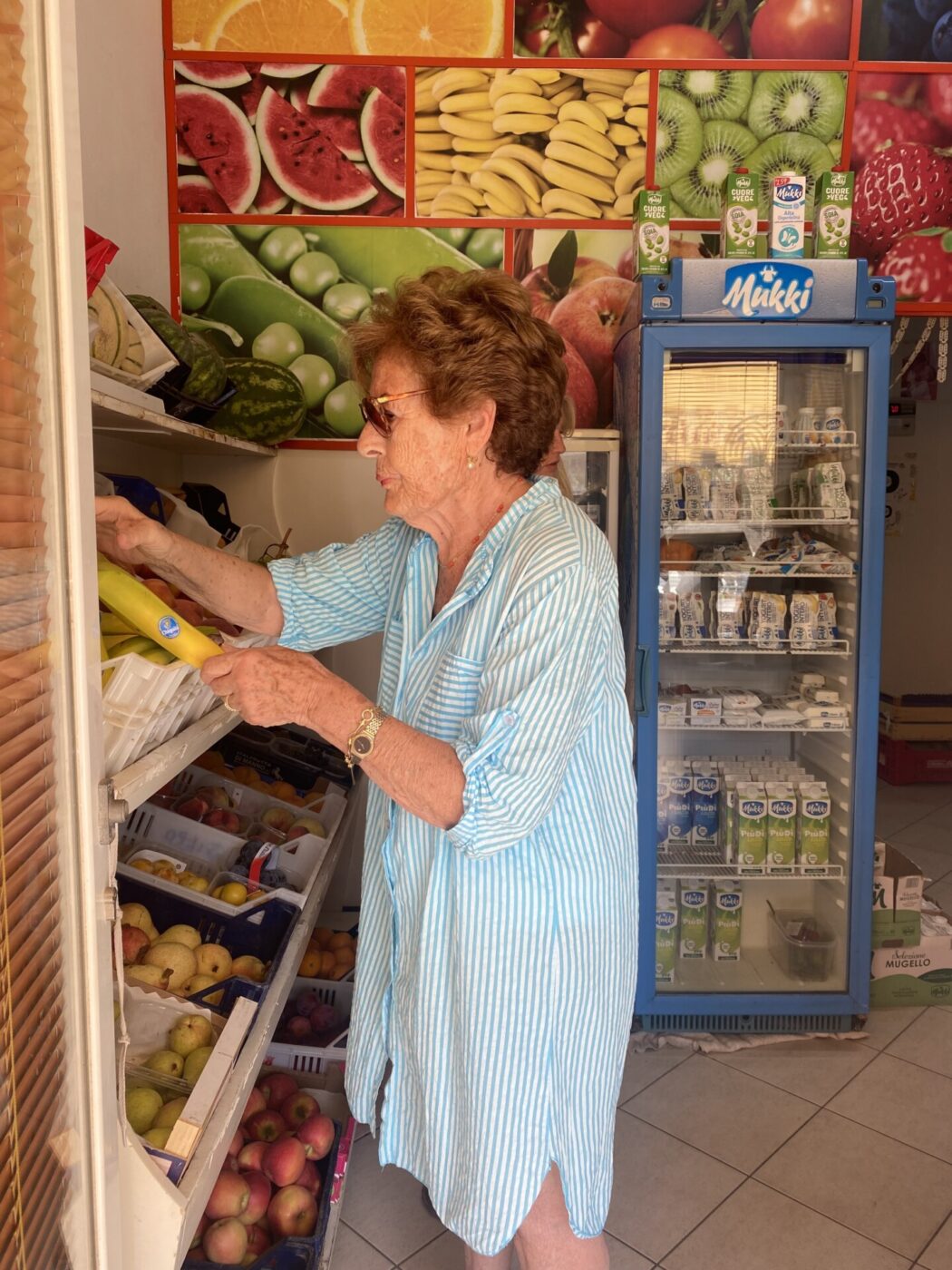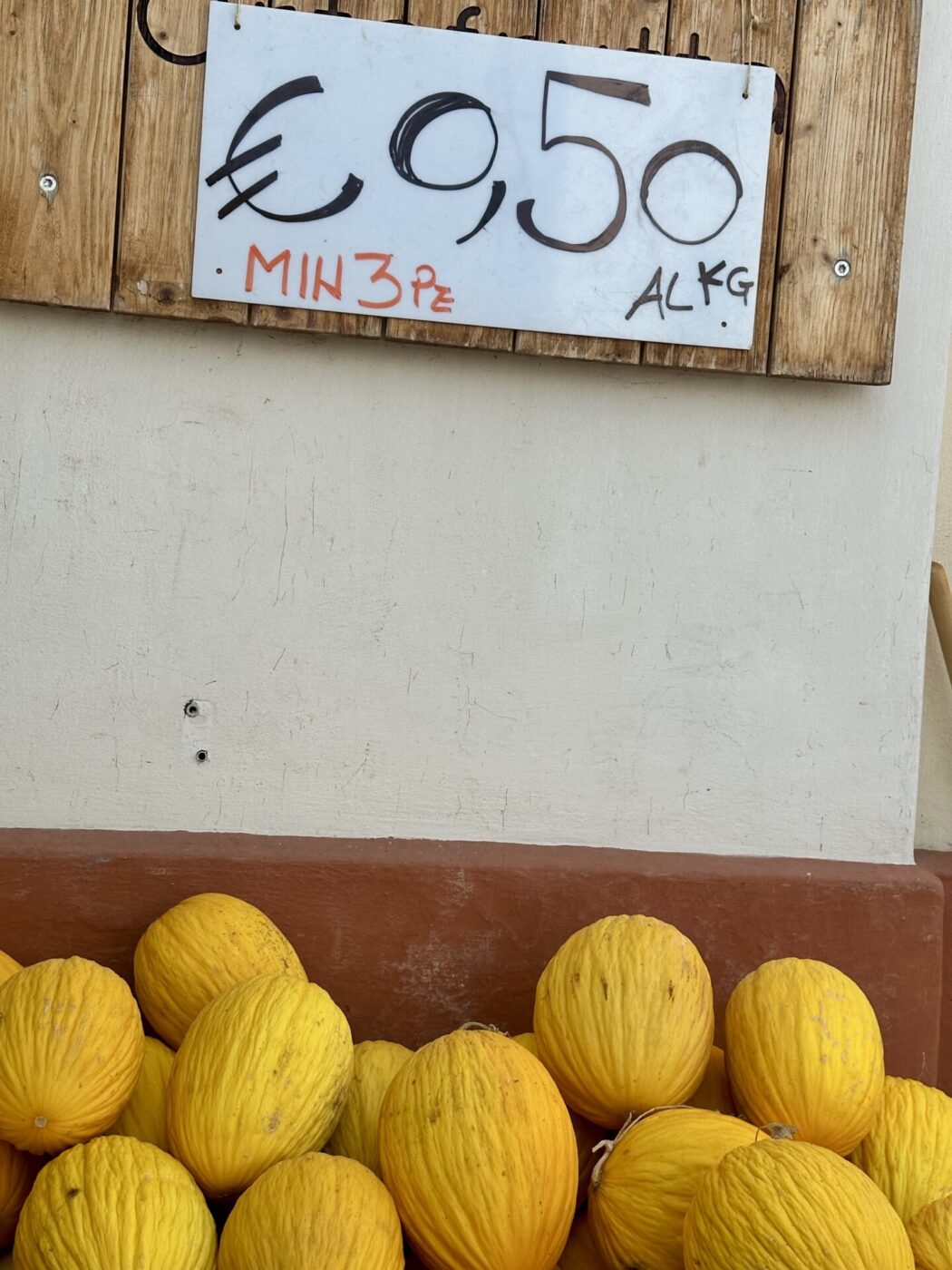“Fai tu, che mi fido.” “You do it, I trust you”; a small but mighty sentence. But, when it comes to your grocery list for the week, there’s no one better to put your trust in than a fruttivendolo. At Milan’s Frutteta Garibaldi, Pippo, a fruttivendolo from one extremity of Puglia, and Franco, from the other, tell me their regulars will often give up the reins, entrusting the duo to pick out their fruits and veggies.
Translating to “greengrocer”, a fruttivendolo acts as the Goldilocks choice between a supermarket and a farmer’s market, offering the fresh, local options that the former lacks and more flexible opening hours than the latter. Here, they sell seasonal bounty–and the occasional pantry staple–from standalone storefronts: brimming with eggplants and peaches, apricots, cherries, plums in the summer, and displays of pears and straight-from-the-forest funghi porcini in fall.
It’s well known that seasonality defines Italian cuisine, and that Italians tend not to eat produce fuori stagione; fruttivendoli might just be the backbone of this habit. For those whose schedules prevent them from shopping at the open-air markets, which close around midday, fruttivendoli provide the post-work opportunity to buy fresh, local fruits and veggies that you wouldn’t find at the average supermarket.
To get the most out of each season, fruttivendoli often work with farmers across the whole of Italy so that they can carry a variety of produce. Daniela, of Mauro Frutta Primizie in Florence, tells me that all her seasonal produce is sourced on Italian territory; “siamo fieri di questa cosa” (“we’re proud of this thing”), she tells me. In the winter, I hear the stars of the show are agrumi like oranges and lemons from Sicily and apples from Trentino-Alto Adige.
As Pippo and Franco’s regulars trust them to curate their grocery bags, Daniela tells me it is she and her son, Andrea, who pick out produce for their customers. Regulars tend to come in two to three times a week to replenish, she adds.

As you can imagine, being a fruttivendolo means being a wonderful cook, and they can offer unlikely but truly life-altering suggestions, like the very autumnal pairing of chestnuts and pecorino cheese for an aperitivo with a twist. Or unveil fun facts, like that there are two kinds of fennel: the feminine type, slender-looking and served raw in salads, and the masculine, bulgier and best kept for cooking. They confirm that tomatoes should be kept out at room temperature to preserve taste–a tip that tomato-obsessed Italians are, surprisingly, often unaware of.
Advising customers on how best to cook and serve their wares, fruttivendoli go into minutia–which, arguably, is not minutia at all–like when you should add a garlic clove and then remove it, versus mince it, into a sugo or soffritto. Pippo and Franco joke that clients aren’t shy to come back and tell them if they didn’t like one of their suggestions–but it doesn’t happen too often as the grocers pride themselves on understanding the palates of their regulars.
Eventually, the fruttivendolo you consistently shop at will become a friend; that’s how Daniela feels about her relationship with the people that she serves. It might just happen that your fruttivendolo di fiducia has kept the best produce aside for you–and thrown in bunches of basil and parsley, the fundamental odori of Italian cooking, free of charge.
We can’t forget, however, that good quality ingredients, the kind that Italian cuisine truly depends on, can come at a higher price. Especially in a more expensive city like Milan, the decision to shop at the fruttivendolo is usually one of privilege. With climate change and cost of living affecting crops and rents, greengrocers have had to adapt, which explains why even the price of seasonal produce has escalated by up to 50% year on year.
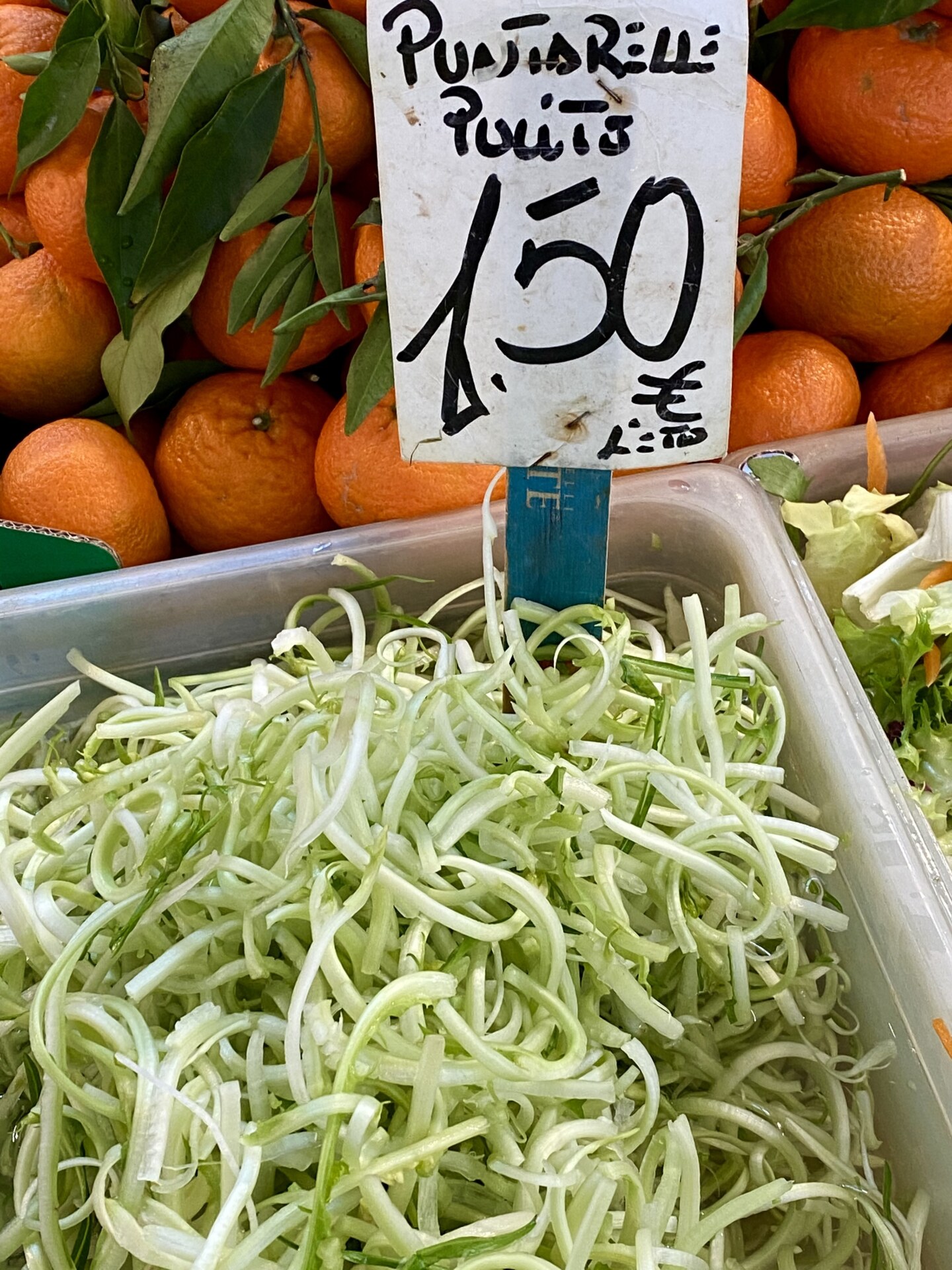
Asking some Roman friends why they still choose to shop at the fruttivendolo, they tell me that, as locals, they want to actively participate in their economy and help other locals thrive. But, also, it’s where they can be certain to find wild vegetables, produce you wouldn’t necessarily find in supermarkets–chief among them the signature dark leafy greens of the Lazio area, puntarelle and agretti. One friend shared that her favorite snack hack, which she uses to impress guests when hosting, was taught to her by her fruttivendolo: season sage, rosemary sprigs, and leek tops (or almost any herb) with olive oil, salt, and pepper, and mix into the chip bowl.
Pippo tells me that his customers skew older–though he is based in Milan’s costly Brera neighborhood, homebase of the glamorous elderly sciure–and that younger people aren’t as compelled to take over the role of the greengrocer. If anything, like a whole host of other professions in Italy, the job of the fruttivendolo stays in the family; it’s something that many, like Daniela, are born into. She took over Mauro Frutta Primizie from her parents, who opened the shop in 1956, and her son Andrea is now part of the business too.
Pippo will be happy to know that this trend might be changing. According to The Guardian, “agriculture is the only sector in Italy that has seen an increase–albeit of 1%–in businesses led by young people in the past decade.” There’s also an increase in organizations that work to represent young farmers, like Coldiretti Giovani Impresa. Because, in reality, up to 40% of Italians still do their everyday shopping at “piccoli negozi”, or “little shops”. The fruttivendolo is just one stop, among others, for a full fridge; next comes il macellaio (the butcher), il panettiere (the baker), la salumeria (the cured meats shop)–all places that capture mundane intimacy in a way that the supermarket could never.
I leave Frutteta Garibaldi, my pomodorini secured, telling Pippo and Franco that they should have their customers over for dinner one day. They respond with a laugh and a “magari!” (“I wish!”). On my way back home, I stop at the cheese shop Re della baita for ricotta salata. Guess what I’m making?
